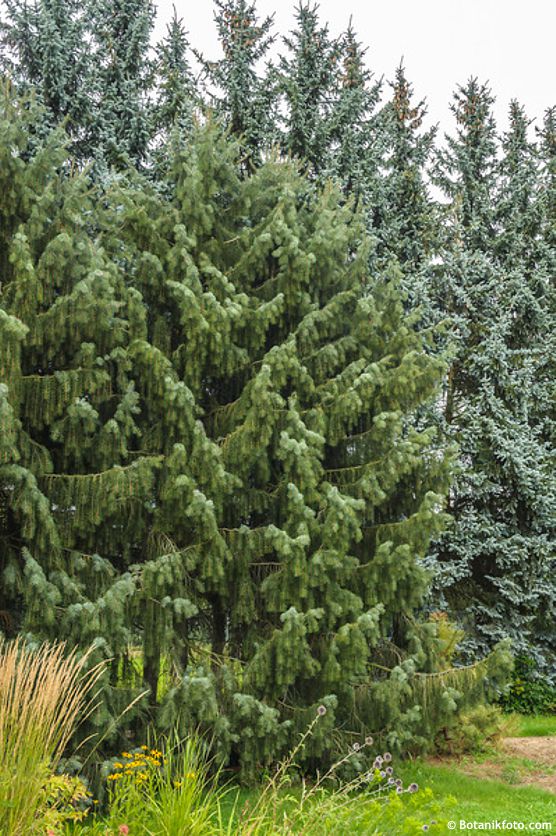Picea breweriana Brewer spruce
Picea
Picea is a genus of conifers with roughly thirty to forty species distributed across the entire Northern Hemisphere, from the Atlantic to the Pacific and from subalpine belts down to lowlands. Fossil records reach back to the Cretaceous, when spruces were already part of primeval forest communities. Linnaeus formally established the genus, but detailed descriptions of many North American species came with the wave of nineteenth‑century botanical expeditions. Spruces have accompanied humankind in almost every way – from construction, musical instruments and resins to shaping the landscape of northern forests, and in botanical gardens they have long stood as the “temple columns” of conifer collections.
The Brewer spruce is a North American endemic of the Klamath Mountains on the border of Oregon and California. It was discovered around 1863 by William Henry Brewer and scientifically described by Sereno Watson in the 1880s. Gardeners value the species for its unmistakable weeping branch character – reminiscent of waterfalls of needles – and for its ability to withstand an ocean‑influenced climate with moist summers and cold winters. Within the genus it differs by its markedly pendulous habit, slower juvenile growth, and its link to rocky, well‑drained mountain slopes, where it survives even as a relict tree in sparse stands. It is long‑lived, and in its homeland one can find specimens 300–500 years old.
The word that most conifer lovers are likely to think of when they first see Brewer spruce is graceful. No wonder, because its long, frilled streamers of branchlets cascading from the scaffold branches turn the tree into a living waterfall. The habit is narrowly conical to columnar in youth, gradually opening into a regular, dignified outline. Needles are 1.5 to 3 cm long, dark green above, with bright white stomatal bands beneath that give the tree a silvery veil when the branches move. To the touch they are rather soft – unlike many other spruces they are not prickly. Cones are cylindrical, often 6 to 12 cm, with a purplish tint when young, maturing in autumn of the same season. Compared with the common Norway spruce, Brewer spruce appears finer, more aristocratic and rather exotic.
In gardens Brewer spruce usually reaches 10–15 m in height and 4–6 m in width over several decades, while in the wild on its mountain sites it can attain twice that size in unrestricted space. In garden design it works best as a solitary lawn specimen, on a slope or as a vertical accent behind a conifer or heath border. It pairs well with rhododendrons, kalmias, pieris, as well as taxus and junipers, to which it provides an elegant backdrop. In parks it suits loose groups, where its weeping curtains offer a counterpoint to rigid outlines. It looks superb near water, as the reflections of its streamers on the surface multiply the effect of a green waterfall. In larger gardens it lends gravitas, in smaller ones it can serve as the single tree that provides a scene throughout the year.
Its requirements are modest if the basics are met: deeper, humus‑rich, well‑drained soil kept evenly moist without waterlogging. Full sun is best yet it tolerates filtered sunlight for a limited part of the day. Protect young plants from strong drying winds – the long weeping streamers can suffer from desiccation – and maintain mulch around the base to stabilise moisture. Keep watering regular for the first two seasons after planting, then the tree becomes self‑sufficient. It requires no feeding or pruning, only the removal of dry or damaged branches in late summer if necessary. Container culture makes little sense, as it needs root space. It is reliably hardy to about −30 °C (USDA zone 5) and is unfazed by heavy snow loads, even over long periods.
Last update 16-01-2012; 02-11-2025
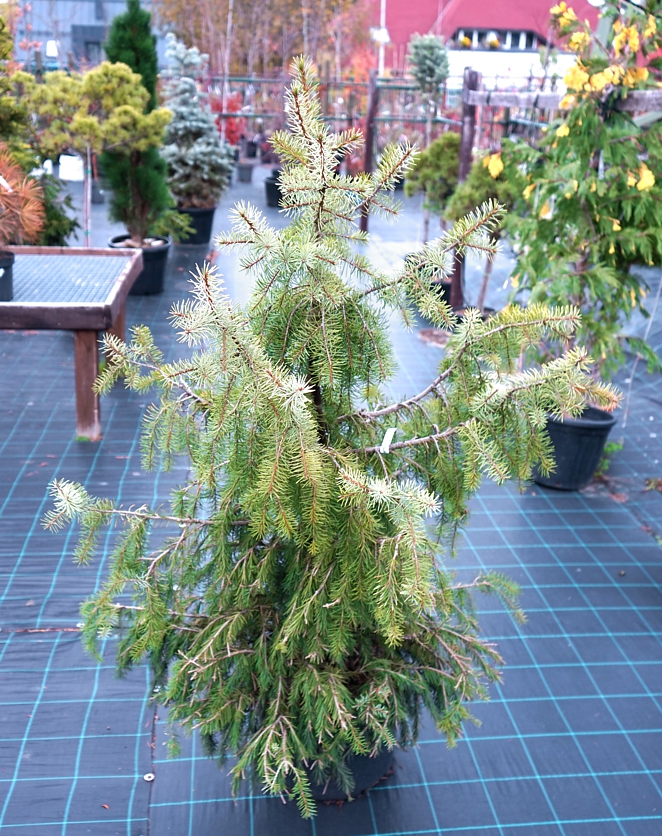
4 607 Kč

4 607 Kč
Goods are shipped all over Europe. For Russia and U.K. and for further details please read about SHIPPING OPTIONS HERE.
Are you interested in a serious discount for orders NOV-FEB? Check your options here.
THE PRICES INCLUDE VAT of 15%. For quick conversion you can use 1 CZK = approx. 0.04 EUR
- STANDARD QUALITY - Plants of this group are 1st class quality with number of branches and overall density adequate to their size and age, considering they were container grown.
- DE LUXE QUALITY - This label guarantees a luxurious quality of manually selected plants that, compared to their height and age, are exceptionally dense and beautiful.
- EXTRA - These plants are usually mature and bigger specimens with exceptional overall appearance.
- STANDARD (as described in the plant form) means a tree with a trunk of 190-210 cm and a crown at the top, unless specified differently. The commercial size for trees is their girth measured in the height of 1m from ground.
- HOBBY - These plants are of the same quality as our standard-quality plants but younger and therefore cheaper.
- SHRUB - a woody plant with branches growing bushy from the ground level.
- HALF-STANDARD or MINI-STANDARD - a small tree with shorter trunk, its size is usually specified.
- FEATHERED - These are trees with branches growing already from the base of the trunk and up along the stem.
- GRASSES and PERENNIALS - Sizes given usually read the diameter of the pot or the clump, as specified.












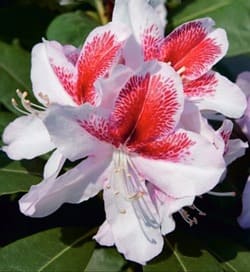




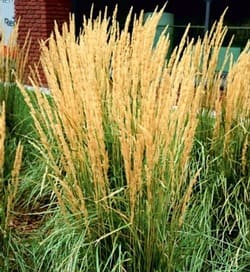
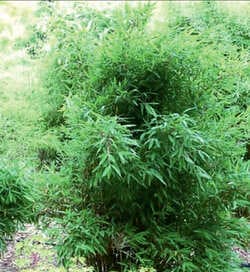
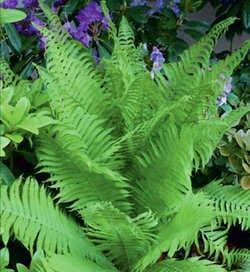




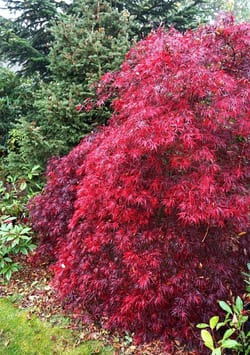
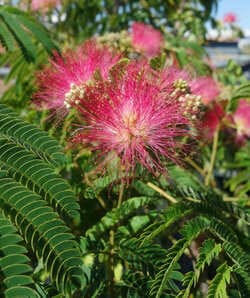
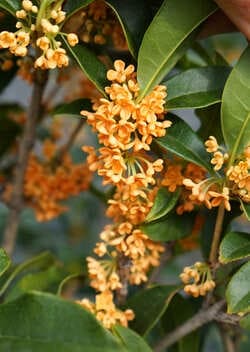



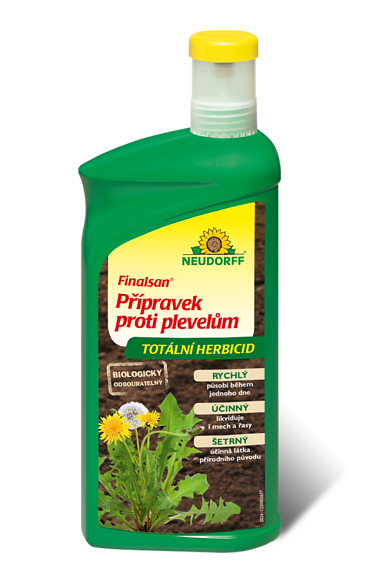


.jpg)


